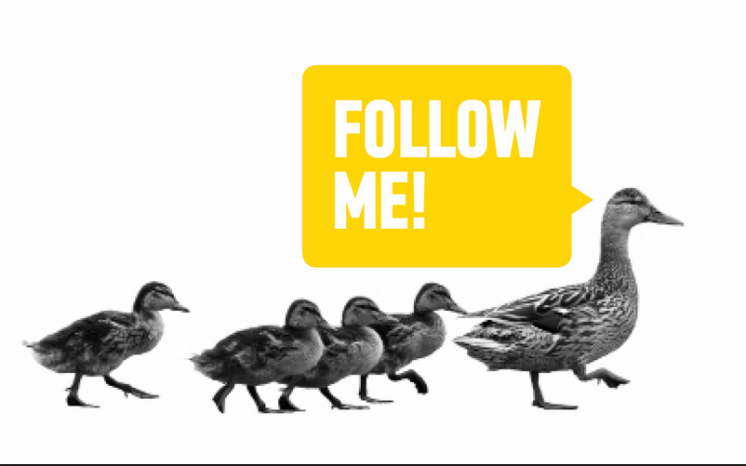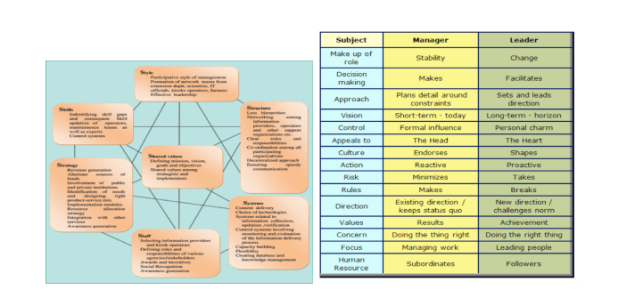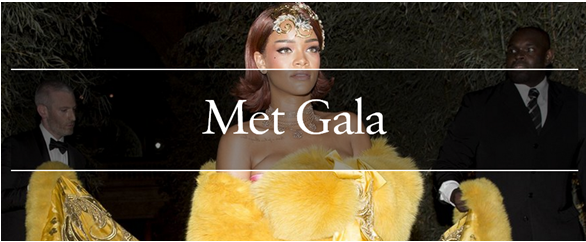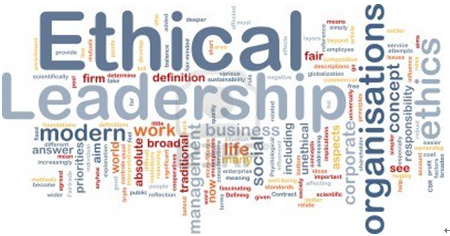
People have discussed the questions, such as “What type of style managers should obtain to lead to success?” over the last few decades. While some people believe that management and leadership can be more consultative and participative if authoritarian has been moved, there are still other alternatives vary with ranging circumstances and individual specific situation.
To start with, there are some differences between management and leadership. Firstly, the definition of two concepts is different. Management refers to the process of getting activities completed efficiently and effectively with and through other people and it tends to viewed more in terms of planning, organizing, directing and controlling the activities of subordinate staff. It is more task-oriented. Leadership, however, is a process or action that affects the actions of an organized group and pays more attention to communicating, motivating, encouraging and involving people, which is more people-oriented. Secondly, management and leadership have different ways to approach tasks. People usually use diverse strategies, rules, methods, ideas or a combination to achieve the goal under a good management. Leadership, on the other hand, is more likely depending on leaders’ personal charisma and personality to motivate and solve problems.
Having said that, similarities of management and leadership cannot be neglected. Both two sectors require good social skills, which involve the ability to direct and lead people to do things. For example, can you persuade people to your point of view without any aggressive behaviours? Regardless of management or leadership, the results of eliminating misunderstanding and solving conflicts are desired. Apart from that, management and leadership mutually influence each other. Good management reflects an effective leadership, and an effective leadership cannot leave without a good management, which are causal relationship.
The program of planned change and improved performance developed by Kurt Lewin involves the management of a three phase process of behaviour modification.
Unfreezing: This stage refers to understanding of need for change and improvement
Movement : Change is a process and at this stage where expected to the implementation of change
Refreezing : This is the last stage where stabilizing of change occurs and new principles or norms support the change.

According to Mullins these are ‘Selective perception, habit inconvenience or loss of freedom, Economic implications, Security in the past, Fear of the unknown are some of them. Organisational resistance is very different from individual ones. Organisational culture, maintaining stability, investment in resources, past contracts or agreements, threats to power or influence’ (Mullins, 2013)
Personally, I believe that the most effective approach to ensure success is managers should have very strong personality and personal charisma. The position of manager is playing key role in a company or an enterprise, due to the fact that they are the group of people most likely to make big decisions and evaluate potential encountering risks. If managers have sound personality and great charisma, employees are more likely to be influenced and encouraged by their leadership, so that the team is more united instead of lacking of motivation to achieve a goal. For instance, Jack Ma, who is the founder and Executive Chairman of Alibaba Group, understands that you will never be able to convince every single employee, business partner, and potential investor to trust you or believe what you say. Accepting that and changing your approach is another key to his massive success. Instead of uniting his company under the vision of one person, he unites them under a common goal. The vision is more important than the leader.
As a result, the way how managers deliver to working subordinates is essential within company’s culture. Traditionally, companies used to have authoritarian and democratic bureaucratic leadership in their cultures. Nowadays, however, it is a totally different society. People tend to communicate frequently with each other, so does an enterprise. If I was a team member, I would like the management and leadership of a company hear different voices, thereby reinforcing its structure and development. If people keep doing in commanding and controlling way, it would trigger subordinates’ negative responses, such as low motivation and enthusiasm, even worse resignation, which is not good for a company.
In conclusion, there are some differences between management and leadership, but they connect and coexist with their similarities. Leader’s personal charisma and influential personality play a vital role in a success of a company, and the way they represent to their working subordinates determines enterprise culture and the ability whether they can maintain their talented.
Reference:
Mullins, L.J. (2013) Management & organisational behaviour. 10th edn. Harlow: Pearson Education Limited.
Leadership vs management, [online] available from aa<http://www.diffen.com/difference/Leadership_vs_Management> [ 20 June 2015].













